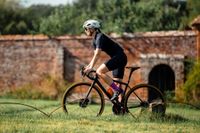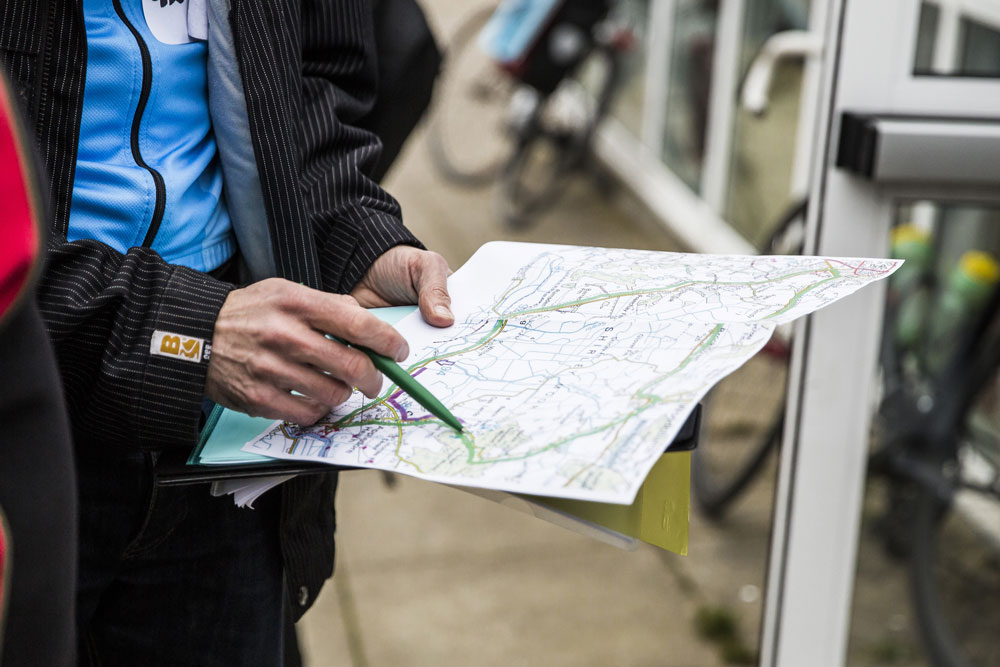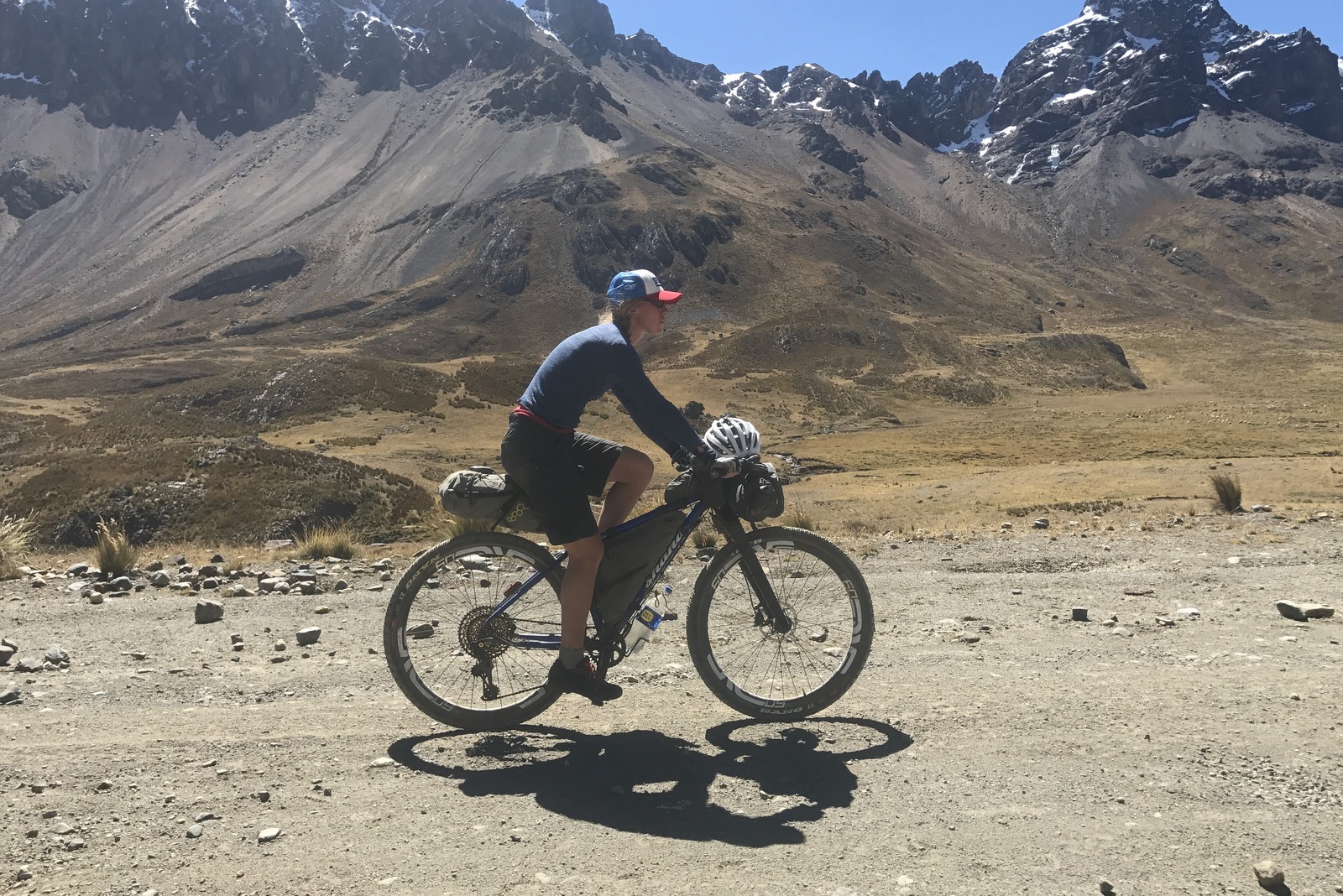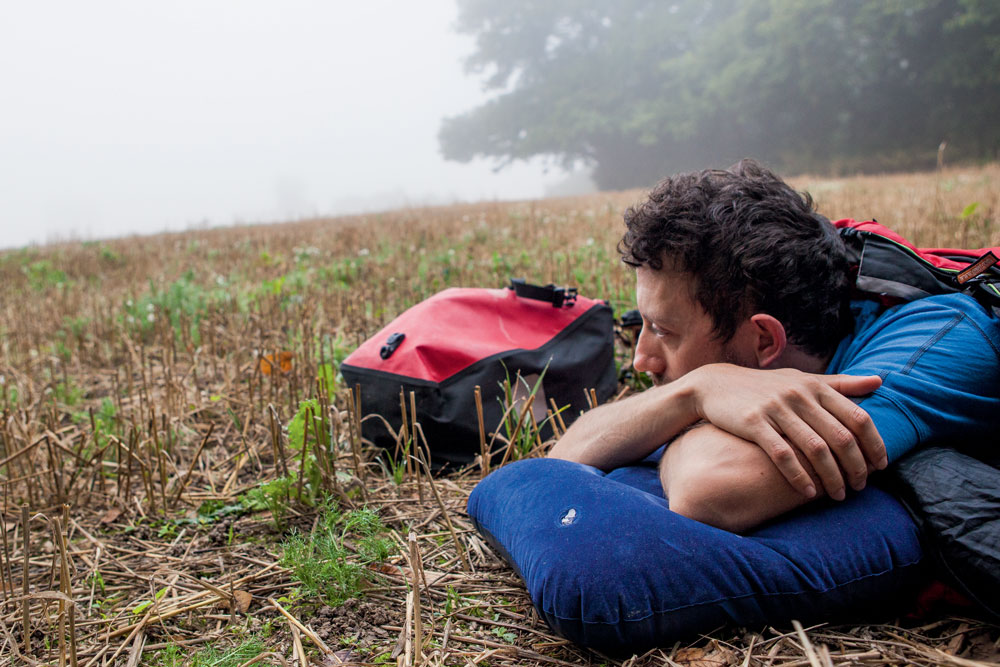What is bikepacking: everything you need to know to get started
Bikepacking is all about adventure - like traditional touring, but off-road - and typically with as little strapped to the bike as possible


What is bikepacking?
Bikepacking, in essence, is a multi-day tour by bike, completed on mixed terrain or entirely off-road with the rider carrying their equipment on their bike.
This discipline of cycling has started to boom in popularity in recent years, aided most notably by wondrous images of such voyages on Instagram and even races for the most committed riders.
Bikepacking is "the ultimate freedom", according to Lee Craigie, a former Great Britain XC mountain biker and founding member of the Adventure Syndicate, a group of women actively challenging riders to seek out new adventures and question their limits.
Few understand bikepacking as well as James Olsen, the founder of the Torino-Nice Rally that covers 700km of mountainous gravel roads on the France-Italy border, and also the designer behind Pinnacle bikes.
He first loaded up a mountain bike with bags for 'lightweight off-road touring' in 2003, moving on to riding with a bivvy bag and wild camping in 2010. "[Bikepacking] has always existed, but lately companies have started to share a lot more inspiring imagery, and now people are interested," he said.
"I think it is an outlet for cycling that isn’t focused on racing,” adding that greater availability of equipment that makes bikepacking easier has aided its growing popularity.
Where do you 'go bikepacking'?
The appeal of bikepacking is one of freedom, of exploring any road, path, or expanse that you like - provided you leave it in the same condition as you found it and following the Leave No Trace principles.
The latest race content, interviews, features, reviews and expert buying guides, direct to your inbox!
Therefore, you can go bikepacking pretty much anywhere. There are plenty of set routes available online too, which almost guarantee great riding if you don't fancy putting a route together yourself.

There are also specific events designed to bring bikepackers together, as well as larger scale endurance races (like the Tour Divide) where most competitors will carry all they need aboard the bike.
Offering advice to beginners, Craigie said: "If you’re the sort of person who needs other people to try new things then an overnight event like The Capital Trail [which starts and finishes at Portobello Beach in Edinburgh] is a good start. Personally, I’d be tempted to head off on my own so I can get my head around things at my own pace."
“Do whatever makes you feel most comfortable,” Olsen says. “Solo 24 hour adventures are a good place to start – it doesn’t need to be epic or as part of an endurance event.”
Do I need to worry about safety?
It's a common and fair question. But trusting your location, people and animals will help ease your concerns.
"In general, don’t worry so much," says Craigie. "People and wild animals aren’t usually out to get you, despite what your imagination likes to tell you when it’s dark and you’re all alone." What about theft? "Bike thieves exist but they’re not round every corner," adds Craigie.
Olsen offers a similar appraisal: "[How much you worry about safety] depends on who you are. Probably to anybody passing early in the morning, I’m the weirdo or potential druggie.
"I think it’s natural for people to be aware of their surroundings, but the scariest thing I’ve ever had was being woken up by police in Spain wanting to check I wasn’t some sort of down-and-out vagrant. As soon as they realised I wasn’t trouble it was fine."
He adds, in his opinion "you’re safer camping out in the wild than you are riding on the average road on a Sunday morning or walking round town on a Saturday night.”
If you are worried, organising a ride with friends is a very good way to get started. Ask any experienced bikepacker and they will all say the same: with mileage comes confidence and trust. It won't be long before you realise that the world, relatively-speaking, is a pretty safe place.
Bikepacking bike frames
Whilst luggage, tents, and other equipment might all be individually light, when combined the mass is likely to be notable and the frame needs to carry all of this across bumpy terrain. A slightly heavier, more robust frame is always better than a cracked frame.
The best bike frame style will depend upon your aims and the routes you plan to take. A mountain bike will handle more demanding trails, but those aiming for speed and confidence that the bike won't hold them back on their chosen trails, should maybe look down the route of an adventure road bike, gravel bike or cyclocross bike. If the route permits it, don't rule out a road bike.
Nowadays, a gravel bike is often the preferred option for bikepacking and the best bikes for bikepacking will allow you to load up and ride a variety of surfaces.
More important considerations for a bikepacker planning to take most of their ride into the wild are the off-road ready elements of the frame - wide tyres, luggage mounting options, disc brake compatibility and mud clearance.

Lee Craigie opts for a mountain bike. Image: Ferga Perry
Craigie, informing us that she prefers carbon wheels and Jones bars, says it doesn't need to be complicated: "[You need] nothing specific. That’s the beauty of these [luggage] systems. No bosses required. If you want to fit a framebag in there you might need to shop around a bit to find something to fit - or get one custom made - but I wouldn’t compromise my ride geometry for the sake of luggage.
“I use my steel hardtail for everything and run a slick-ish tyre so I just have to play about with the pressure depending on whether I’m on- or off-road."
Olsen – who designs road, adventure, hybrid and mountain bikes for Evans Cycles’ Pinnacle brand - also reckons a mountain bike is your best bet: “It’s better to be riding a mountain bike on the road for half of your trip than riding a lightweight cross bike and trying to ride that off-road.
“[The best bike for you] depends on your ride. If you want to do Transcontinental – get a road bike. If you just want to explore off-road then a mountain bike is best. Adventure road seems to be a massive category and is really popular but I don’t think they make great bikepacking bikes.
"Drop handlebars, narrow tyres, they’re great bikes for a day trip – but as soon as you start loading the bike down with 5-6kg of luggage bigger tyres are really important.
"Look for bigger tyres than you expect you will need; 650b wheels are good as all of a sudden the bike becomes so much more off-road capable under load.”
When it comes to componentry, you might want to choose lower gearing to cater for long distances and the added weight of your equipment. Choices like flared handlebars on drop-bar bikes can make a considerable difference to how much you can store in a handlebar bag.
And of course, if you're going to be in the saddle multiple days on end, a comfortable saddle is a must. Don't underestimate this.
Bikepacking bags
When cycle touring, panniers are the order of the day for most riders - but the way they alter weight distribution can mean they're not ideal for off-road bikepacking. What's more, they widen the overall load so that narrow trails can become an issue. You'll also need a rack or set of racks to attach them to.
More popular choices are strap-on bikepacking bags, including frame bags, which sit in the front triangle, seatpost bags which attach to the seatpost, effectively like a very large saddlebag, and handlebar bags at the front. Then additional bags like top tube bags, snack pouches and fork-mounted bags can all give additional storage options.

Lee Craigie says your luggage doesn't need to be complicated, but it does need to be robust. Image: Ferga Perry
“Part of the reason [bikepacking is] so popular," Olsen adds, "is that really all you should need is the bike you’ve currently got, some bags, and an idea where you want to go. The idea that you can just strap these bags to your bike rather than worry about having a bike with eyelets and so on is really why it’s got so popular."
What you use is up to you, but Craigie advises: "Durability of attachment points [is important]. Durability in general. Buy cheap, buy twice. Simplicity. A well-thought through piece if equipment should be easy to mount and use."
Bikepacking sleeping systems
So you've got your luggage options sorted - but what to pack? And how to carry it?
When it comes to sleeping, you can take a lightweight tent, a bivvy bag or a hammock, plus a tarp for the latter two in worse weather.
Craigie says: "Different situations require different sleeping solutions. Fast and light - bivvy. Midges, long evenings, bad weather, I’d take the weight penalty and carry a tent,"
Olsen has a lightweight tent but rarely uses it: "It depends on the conditions; there’s no answer to what’s best. But for me part of the pleasure of the experience is just appreciating being outside in a sleeping bag in a sheltered spot – and being able to wake up and see the stars.
"Being shut up in a tent wouldn’t be a part of what I enjoy. But if I was going out in bad weather with midges, there’s no way I’d do that without a tent – though a bivvy bag and a lightweight tarp might be easier.”

Whilst we're on sleeping arrangements: it's worth being aware that technically wild camping is not legal in the UK (except in Scotland and on Dartmoor) - all land is owned and you're meant to ask permission from the land owner. However, many bike packers go by the 'leave everything as you found it' rule. It goes without saying, but leaving any destruction or rubbish is not cool.
Olsen’s bonus advice, which isn’t fun to learn first hand, is that “most cycle kit is designed for a few hours, maybe a day – outdoor dedicated kit can be best.”
Kit for cooking up
What you're going to cook food with matters, too. After all, while eating out for breakfast, lunch and dinner is much easier, it can become very costly.
Camping food is typically simple and easy to make, but there's no reason why it can't be as tasty as anything you concoct in your kitchen. Our tip: bring just enough spices for your trip.
Craigie varies the approach depending upon her trip: "I use an Optimus Cruz on a solo titanium mug and a tiny gas canister for overnights.
"But if I’m going further afield a multi fuel stove is essential because disposable gas canisters have a hard impact on the environment and aren’t always available. They also don’t perform that well in cold conditions and I hate having to sleep with mine in my sleeping bag."
JetBoil has a reputation as one of the best best manufactures of lightweight gas-fused portable stoves, used world over among hikers and mountaineers. Capable of boiling water within just a few minutes, they're the perfect accompaniment on a bikepacking adventure. Although for frying veg and meat they aren't the best.
Other bikepacking essentials
Though you may be able to ride to a bike shop should you experience major problems, you'll need to carry tools and spares to maintain and care for your bike, especially if you're heading into more remote areas.
Some spares to remember include inner tubes (whether you're set up tubeless or not), a puncture repair kit, chain quick link and a spare mech hanger for your bike. Don't forget extra chain lube and some electrical tape, too. Oh, and a few cable ties might just become your best friend.
Some of the best Bike lights, best bike computers, and a charging system such as a battery pack or even low speed specific dynamo hubs are other things to consider too, though Craigie’s key items are “spare lights and single malt.”
If you're into documenting your trips, the best bike and helmet cameras will allow you to capture some great footage.
There are quite a lot of 'pack lists' available online which can help provide inspiration – though she adds “[on my first trip] I didn’t need as much [equipment] as I brought with me.”
Find the breakdown of our chosen kit for two weeks bikepacking around Central Europe here - what worked well and what didn't quite.
There's plenty of clothing designed for bikepacking too. Usually it majors on carrying capacity and items like the best cargo bib shorts will help you to keep small items close at hand.
Anything else?
Enjoy it. It's about freedom, exploration, adventure. You're probably not racing.
"The only thing I wish I'd known when I started was how much I was going to enjoy it," Olsen says, "because I probably would have done a lot more of it earlier on. It might have changed what I did on my bike when I had more time to do long trips.”
Trust us, you'll be hooked after one trip.
If you're interested in hearing about one of our recent bikepacking adventures, here's our full write up of our two week bikepacking trip from Budapest to the mountains of Slovakia.
Michelle Arthurs-Brennan the Editor of Cycling Weekly website. An NCTJ qualified traditional journalist by trade, Michelle began her career working for local newspapers. She's worked within the cycling industry since 2012, and joined the Cycling Weekly team in 2017, having previously been Editor at Total Women's Cycling. Prior to welcoming her first daughter in 2022, Michelle raced on the road, track, and in time trials, and still rides as much as she can - albeit a fair proportion indoors, for now.
Michelle is on maternity leave from April 2025 until spring 2026.
